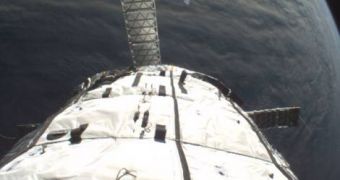What stops them you say? Well, it may be the fact that the Bigelow Aerospace agency currently has no vehicle to launch the Bigelow Sundancer module into space. Thus, they started studying the possibility of using Atlas 5 rockets for the initial launch of cargo and and even humans in the close future. If negotiations with the United Launch Alliance will end successfully, then Bigelow Aerospace may proceed launching their private space station into space as soon as 2011.
Bigelow Aerospace officials say that, by the time the facility will be fully operational, they may conduct as much as twelve launches a year. Meantime, assembly of the space station will begin with six initial launches in 2011. At least that's the plan. The transportation of the Sundancer module and other hardware will probably take place in the first two of the six scheduled launches in 2011, while the other four will have the role of carrying additional equipment and a permanent crew.
The written press statement released by Bigelow Aerospace reveals that, in the second year of scheduled launches, the transportation missions frequency will double. The same thing is available for the third year of the program, so that in the fourth year Bigelow Aerospace would reach a total of 18 launches per year. The United Launch Alliance also confirmed that, starting with the 1st of February, it has began negotiations with Bigelow Aerospace and is currently evaluating the possibility of modifying the Atlas 5 rocket design to accommodate future passenger transportation.
Nonetheless, one of the biggest concerns is whether ULA will be able to provide with 12 launch vehicles as proposed by Bigelow. The best personal record of Lockheed Martin was set back in 1995, when is successfully launched 11 Atlas 1 and 2 rockets into space, from Florida. The launch complex would not be a problem, since one that could handle the increased traffic already exists at the Cape Canaveral Air Station.
Probably not many of you have heard about Bigelow Aerospace, but the fact is it already has two expandable modules into Earth's orbit, launched in 2006 and 2007, with the help of Dnepr rocket boosters from ISC Kosmotras Yasny Cosmodrome, in Russia. Albeit the increased price of Russian launches, the success of the two expandable modules, Genesis 1 and 2, and their will to continue expansion, drove Bigelow towards finding a new partner.
Once finished, the Bigelow space station would be able to accommodate somewhere between 6 to 15 people on board, for a price of only 15 million U.S. dollars. The company is still to decide what type of spacecraft it will use in combination with the Atlas 5 rocket, to put passengers into the Earth's orbit.

 14 DAY TRIAL //
14 DAY TRIAL //